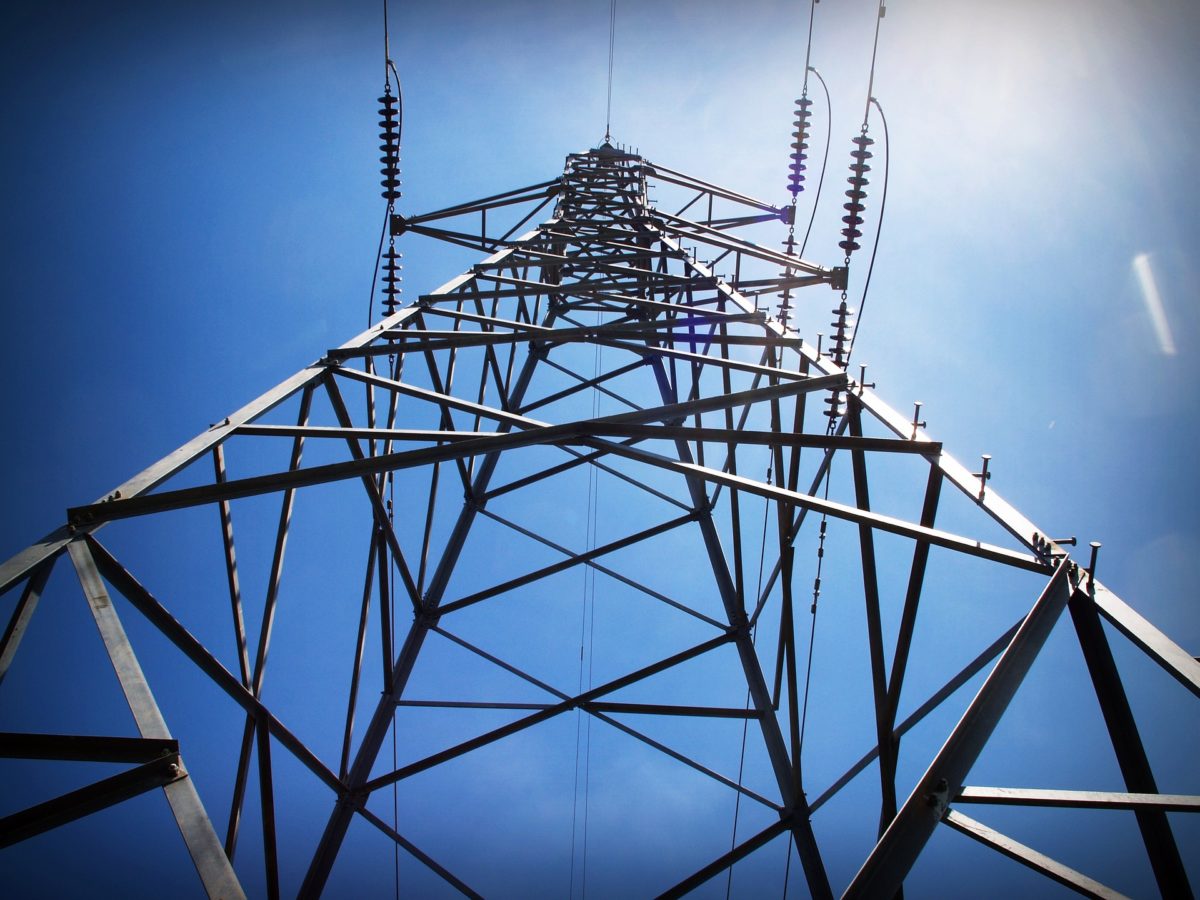From pv magazine global
There are plenty of examples of big utilities using their monopoly status and wealth – the latter derived from profits guaranteed by state governments around the United States – to try to block customer access to self-generation technology.
For starters, in 2020 PG&E (Pacific Gas and Electric Company), SDG&E (San Diego Gas & Electric), and Southern California Edison between them pushed through an average $900 per year tax on consumers of solar and on energy storage systems. In making this proposal, the investor-owned utilities (IOUs) explicitly contemplated the need to tax self-consumption, including non-exporting battery systems, simply because the consumer would purchase less of the IOUs’ product.

Image: California Solar & Storage Association
If the IOUs did not hold a monopoly over California’s electricity market, if they weren’t guaranteed a profit by California regulators which amounted to more than $48 billion in 2021, they would have no standing in demanding a tax on consumers who use less electricity. The idea is preposterous. But these three investor-owned utilities control 80% of California’s electricity market and, as a result, have undue influence over energy policy. They use their wealth and status to influence policymakers, hiring PR firms to push out fake math and false messages around equity and ratepayer protection, and they generally work to block and tackle competition in the marketplace.
California isn’t alone in this dynamic. There other examples of monopoly utilities abusing their power and status throughout the country. A 2021 report, Blocking Rooftop Solar, by J David Lippeatt, Adrian Pforzheimer, Bryn Huxley-Reicher, and Bronte Payne of sustainability research body the Frontier Group and the research and policy center of nonprofit Environment California, details more than a dozen examples.
The report points out how FP&L [Florida Power & Light], Duke Energy, and Tampa Electric Co used their power in the state to block pro-solar policies that would enable consumers to go solar. The utilities directed more than $43 million to state-level political parties, candidates and committees, including the governor, over the 2014 to 2016 election cycles.
In another example, concerning a utility active in 16 US states, Lippeatt et al write about how, in 2020, Dominion proposed a suite of solar-only fees and charges designed to penalize solar users, totaling $750 per year.
Of course, it is not just in the US that legacy power companies take advantage of their monopoly status to harm consumer-controlled generation resources. In Australia, there has been a proposal to charge solar users for energy exports while at the same time not levying such a fee on other generation resources.
California solar companies are suffering under the uncertainty of state policy making. The “NEM-3” proceeding to modify the state’s net metering policy was launched in August of 2020 – more than two years ago. Stock prices have plummeted for publicly traded companies due to the uncertainty. The state’s small, family-run businesses – which make up 80% of the market – are being hit with more and more red tape while bracing for the negative impacts of a yet-to-come NEM decision.
Last December, the California Public Utilities Commission proposed a NEM-3 verdict that was nearly as bad as what was proposed by the utilities. It included a huge monthly tax for solar households and a dramatic slashing of the credit solar households get for power they export to the grid. The proposal faced a widespread public backlash and was immediately put on hold but a new decision has yet to be released nearly a year later.
If California ends up with dramatic overnight changes to NEM, small solar companies could simply go out of business or leave the state because the cost of doing business would go up just as the value of solar and energy storage would fall. These PV businesses, which number in the thousands and employ the majority of solar workers, have been living with the policy uncertainty for two years now. Just how they fare in the months ahead is up to California governor Gavin Newsom and the policies his administration adopts in the next few weeks and months.
Consumer dilemma
At the end of the day, however, it is the consumer who loses the most. The California energy consumer is paying extremely high prices for electricity that is increasingly unreliable. When the California consumer attempts to solve this problem through self-generation, they are threatened with taxes and penalties. Nowhere is this more starkly illustrated than in the example of a working class family living in California’s Central Valley, where summertime temperatures commonly top 105 F and air conditioning loads are high and expensive. With the decline in solar pricing, these families are going solar in large numbers, driving the growth of new adoption in the past three years. The utilities’ proposed penalties and taxes would hit these consumers the hardest as they are the least able to shoulder a hit on the economics of going solar.
A utilitarian future?
Ultimately, the rise of consumer-based clean energy technologies such as solar and storage systems does not necessarily mean the end of the monopoly utility. Someone needs to build and maintain the roadways for electrons to travel on and the capacity of the grid will grow as we electrify transportation. However, we can reduce the amount of grid expansion with the build out of distributed generation, which would save everyone money. The state’s monopoly utilities might not make as much money under a high-electrification future with more local generation but they will still be very profitable. There is no death spiral for the California electric utility.
The key to balancing all the interests is to have a strong watchdog agency independent of utility influence and held accountable by the consumers it serves. To achieve this, we must have an informed and engaged populace that has real energy options and competitive markets to keep prices down. This has always been the balancing act in America. Time will tell whether California remains the incubator of innovation and consumer choice or if it falls back into the arms of the monopoly-utility past to the detriment of solar industry and consumer alike.
Bernadette Del Chiaro is executive director of the California Solar & Storage Association business group. She will moderate a talk on abuse of monopoly positions by utilities at the Empower 2022 virtual summit organized by solar software company Aurora Solar on Nov 1-2.
The views and opinions expressed in this article are the author’s own, and do not necessarily reflect those held by pv magazine.
This content is protected by copyright and may not be reused. If you want to cooperate with us and would like to reuse some of our content, please contact: editors@pv-magazine.com.








I agree a 100%.
The cabal of off-camera dialog by and between CPUC, CEC and the IOU’s must end. Even CAISO isn’t really doing what the “people” of California need and want – transparency and Consumer Choice;
RPS created CCA’s – but they also opt for opacity;
The problem with Government is exactly this – once placed into office they forget the Electors interest.
What a corrupt and disgraceful bunch of monopolies and regulators. Follow the money. We have to fight them every inch of the way. But we’ll win in the end. They can’t stop us in the long run.
NEM-2.0 in California is totally consumer oriented for Solar installations without batteries up until the annual True-up, then the utilities get to pay below wholesale for the unused home generated and not used electricity. The secret to getting full value is to use up all the electricity you produce before the true-up date. That means, either wasting it on outdoor extravagant lighting, water features and other unnecessary items or replace the natural gas fueled appliances and heaters with electric ones until the NEM balance becomes Zero. The utilities have already used the electricity Rooftop solar customers have sent them and billed other consumers, at full retail, for the excess energy produced each day.
If the utilities were able to get the NEM-3.0 compensation package, as proposed by them and the CPUC passed, the cost of replacing Natural Gas Appliances, heating and charging electric cars would require more fossil fueled power plants or more grid scale solar arrays and battery storage on a grander scale than the utilities could afford without raising tariffs on electricity to even higher levels. However, allowing rooftop solar installations to go larger than 15,000 watts up to 200% of the previous year’s usage could generate enough power to switch over to all solar and wind power providing there is some kind of electrical storage package that could store the excess electricity. Pumped Hydro or water-to-hydrogen generation are non-battery chemical intensive storage options already used around the world with great success.
Paying for this upgrade would need to be done by charging “ALL” users a “Transition to clean power fee” just like the fee charged for “Nuclear De-commissioning fees” now charged on utility bills based on consumption. The NEM smart meters already know how much consumption both rooftop solar customers and non-rooftop solar customer use. Adding batteries to a rooftop solar system would reduce the “Transition to clean power fee” because the in and out from the battery would not show up on the NEM smart meters unless the grid is used to charge the batteries rather than the solar array on the home. Utilities need to get something for their efforts to make the transition to cleaner energy and this “Transition to clean power fee” that is only used for the build out of solar, wind and energy storage infrastructure could be the answer rather than going for a NEM-3.0 approach.
I cannot understand why consumer advocates do not push fervently for electric utilities being de-regulated. If you wish to generate your own electricity, you should be able to sell your excess to the highest and best bidder. Do NOT fool yourself into believing that your elected officials have the consumer’s best interests at heart. Remember, you cannot possibly buy these folks enough steak dinners!
Just like PURPA several Decades back… when Electric Utilities fought.. “tooth-n-nail”.. to prevent any other Electeicity Generator but their own to “use” the Grid…
Now this Myopic Supidity in the Boardrooms of ths Electric Utilities..
These.. fools (??) should by lobbying for ZERO POLLUTION ENERGY IN THE FORM OF ELECTRICITY .. ESSENTIALLY USING SOLAR ENERGY ONLY…
IN SUCH A WORLD… the Global Electric Grid will grow from 7TW TODAY .. to 150TW by 2050.. to meet the 120,000/180,000 TWhrs/yr NEEDS OF ALL SECTORS … IN PLACE OF THE BARELY 25,000 TWhrs/yr TODAY…
Now you see.. why I call these Utility Boards as Myopic & Stupid… as they firmly place their heads in the sand… and miss out the “BIG & BRIGHT FUTURE” FOR ELECTRIC UTILITIES…AND SAVE HUMAN LIVES AND SUFFERING TOO …. BUT ARE OBVIOUSLY INCAPABLE OF “STEPPING UP TO THE PLATE” THAT IS AROUND THE CORNER…
SHOULD THE USA/PEOPLE SUFFER AND BE HELD HOSTAGE BECAUSE OF THESE INCAPABLE & INCOMPETENT ELECTRIC UTILITY BOARDS … AND ARE FORCED TO LIVE AND DUE EARLY AS THEY SUFFER TOO…
IN A POLLUTED USA/WORLD .. ??????
Alternatively, maybe a SEPERATE 150TW SOLAR POWER GRID is needed together with a PMP (Polluter Must Pay) Levy of $0.31/KWhr on ALL POLLUTING ENERGY PRODUCERS & USERS (120,000 TWhrs/yr).
This PMP Levy will Offset the Societal Cost caused by the 9 Million PREMATURE Deaths Annually and 275Million DALY of Suffering caused by Pollution.. TODAY… ( $1 Million / Victim; $100,000 / DALY of Suffering).
Watch the Utilities, with their DIRTY & PMP LEVY AFFECTED ELECTRICITY DISAPPEAR.. OVERNIGHT … JUST BECAUSE OF THE FOOLS & INCOMPETENCY IN THE UTILITY BOARDROOMS… TODAY …. !!!
SAD BUT TRUE… !!!!
IT IS TIME THE PEOPLE DEMAND THAT POLLUTERS FACE THE CONSEQUENCES OF THEIR “POLLUTION ADDICTION” .. BY A GLOBAL (???) PMP LEVY (as per the UN 1992 Rio Agreement to the PMP Principle.. agreed to by 170+ Nations already).
The above Global PMP Levy of $0.31/KWhr or $36.5 Trillion/yr can then be used to Finance & Usher in a ZERO POLLUTION EARTH in a Dozen Years from the $400 Trillion Collected.. and let the DIRTY GRID.. RIP.. FOREVER..!!!
“To achieve this, we must have an informed and engaged populace that has real energy options and competitive markets to keep prices down. This has always been the balancing act in America.”
I love this paragraph. If the already-in-motion solar revolution can indeed, be of this nature, we will all benefit.
So far, it seems, solar has “needed” a fair amount of government assistance. Consider the recent “Inflation Reduction Act,” passed by Congress. This type of big chunk money usually makes it’s way to the big chunk players, not the grass-roots small businesses spread across America.
I would love to read stories about personal solar fields that are larger than the solar panel systems I see on suburban homes. 99.9% of the suburban home solar panels are owned and managed by someone else. The typical suburban home owner has no idea what’s going on, other than there is stuff on their roof, and their electric bill is lower.
It would be interesting to hear about private solar fields, where the owner manages and maintains their solar electric generation and storage system. I’m hoping there are some interesting stories out there.
It’s the difference between merely CONSUMING beef, poultry, milk products and eggs, and PRODUCING the same.
Living in central Florida, I have a rooftop solar plus storage system that functions beautifully. Even with net-metering in effect, I get charged a $30 per month “Minimum” by Duke Energy. That’s bad enough but they also find a way to hit me with an additional $5 to $10 per month for I-know-not-what. This happens even on months for which I am a net exporter to Duke. Any suggestions???
Thank you for this entry. I always learn important ideas from PV Magazine. Still working here, to repair and reset development of planning for actually Green ( First, Do No Harm) solar, in Nevada… The goal is to have built/irretrieveable surfaces be the locations for any “large array” infrastructure – not into and across irreplaceable, essential Mojave Desert wildlands and biological refugia. In 2020, Nevada discovered it has long been a prime target of the eternal transnational utility scale energy development corporations. Passage of SB 358 was their money, their writing, their machine, and our desire here, to have – microgrid – solar, got sidetracked and disappeared. We are now stuck with 1990s business modeling and infrastructure, originating from the 1872 Mining Law and 1976 FLPMA culture.
I hope something better can be done – I see that individuals don’t have the money to remove the wrong set up. Market “Uncertainty” from other natural and beneficial delays and complications (cascading evolution in photovoltaics science and engineering) have been my only hope, for our being rid of the influence of speculators, upon “fair” and ecologically sound energy development.
Please instruct how I can send this article to BLM Southern Nevada Energy Projects, Regions 8 and 10? – as reference reading. I can’t believe they do not read information in PV Magazine.
We who oppose utility scale solar “large array” infrastructure being permitted onto irreplaceable wild desert “biological refugia”, have been told by DOI/BLM deciders: They are not in the business of protecting wildlands and wildlife: Their job is to facilitate, within certain protective guidelines, profitable extraction of natural resources from DOI lands by transnational energy development corporations. We have deep research history and continuous new flow of scientific reasons to not be building 1860s-1990s business model infrastructure in the Mojave. But the permits keep coming. I am hoping poor $ return on investments, Market “Uncertainties” and racing photovoltaics will delay and end the 1976 FLPMA culture version of solar. But wider disapproval over current federal and state management objectives would help.